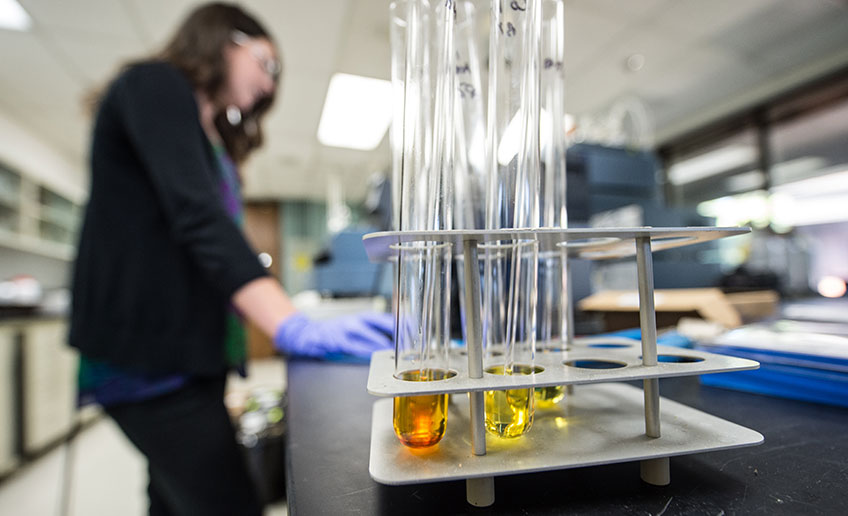Co-Optima Reveals Scientific Details Behind Light-Duty Vehicle Research

For the first time, researchers with the U.S. Department of Energy's (DOE's) Co-Optimization of Fuels & Engines (Co-Optima) initiative have shared scientific details that will help the research community and industry identify viable candidates for bio-based fuels that can maximize performance and efficiency when used in turbocharged spark-ignition (SI) engines.
The findings recently published in a Progress in Energy and Combustion Science journal article reveal the fuel properties needed to optimize engine performance and efficiency, as well as the methods used to identify and evaluate these properties.
For the past four years, the Co-Optima team has focused research efforts on gasoline-fueled SI engines, which power most of the light-duty passenger cars and light trucks on today's roads. This research involves identifying the fuel properties and engine parameters that mitigate knock and emissions, while maximizing efficiency and performance.
The result of this research is a unified merit function, a computational tool that allows new fuels being developed from biomass or other feedstocks to be evaluated for efficiency potential on the basis of critical fuel properties. Combined with a previously unimaginable wealth of fuel property data on emerging biofuels compiled for the Co-Optima initiative, the merit function has dramatically changed how researchers think and talk about fuels.
"Until now, we've been using test methods that are nearly a century old to predict knock resistance and engine efficiency," said National Renewable Energy Laboratory (NREL) Senior Research Fellow, Advanced Fuels and Combustion Platform Leader, and Co-Optima Leadership Team Member Robert McCormick, who co-authored the journal article. "This new tool finally makes it possible to accurately identify fuel candidates with the properties capable of delivering the efficiency, performance, and environmental benefits we need."
The merit function quantifies the fuel efficiency potential associated with six different fuel properties. In the journal article, the Co-Optima team explains how it has identified three fuel properties—research octane number, octane sensitivity, and heat of vaporization—as having the greatest impact on turbocharged SI engine efficiency.
Oak Ridge National Laboratory (ORNL) Fuel Properties Technical Lead for Co-Optima Jim Szybist was lead author of the journal article, which was co-authored by researchers from NREL, as well as from Argonne (ANL), Lawrence Livermore (LLNL), and Sandia (SNL) National Laboratories.
Co-Optima brings together top scientists, engineers, and analysts to investigate how simultaneous innovations in fuels and engines can boost fuel economy and vehicle performance while reducing emissions. Sponsored by DOE's Office of Energy Efficiency and Renewable Energy's Vehicle Technologies and Bioenergy Technologies Offices, Co-Optima partners include ANL, Idaho National Laboratory, Lawrence Berkeley National Laboratory, LLNL, Los Alamos National Laboratory, NREL, ORNL, Pacific Northwest National Laboratory, SNL, and more than 20 university and industry partners.
Read the full journal article, get more information on Co-Optima activities, and learn about NREL's fuels and combustion research.

